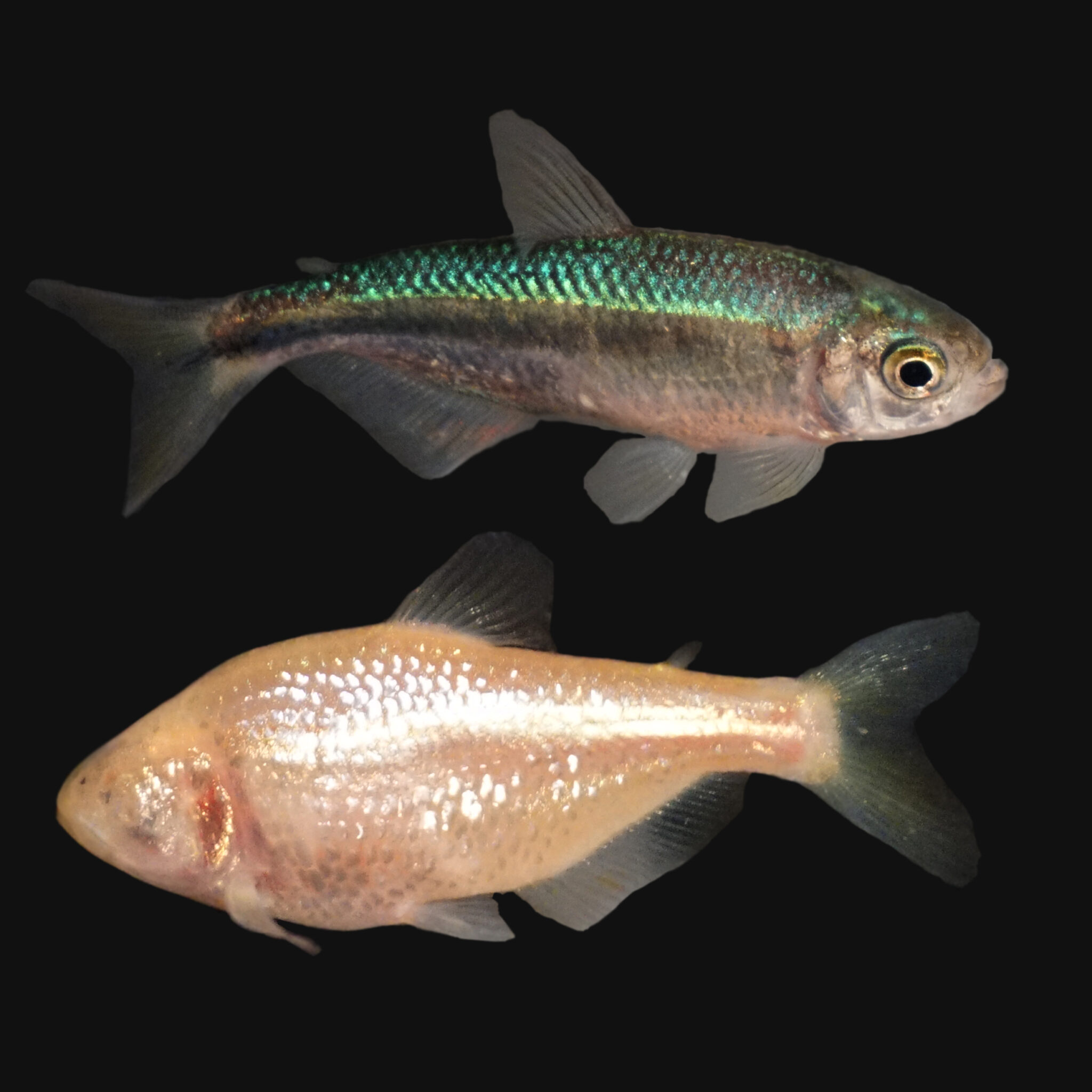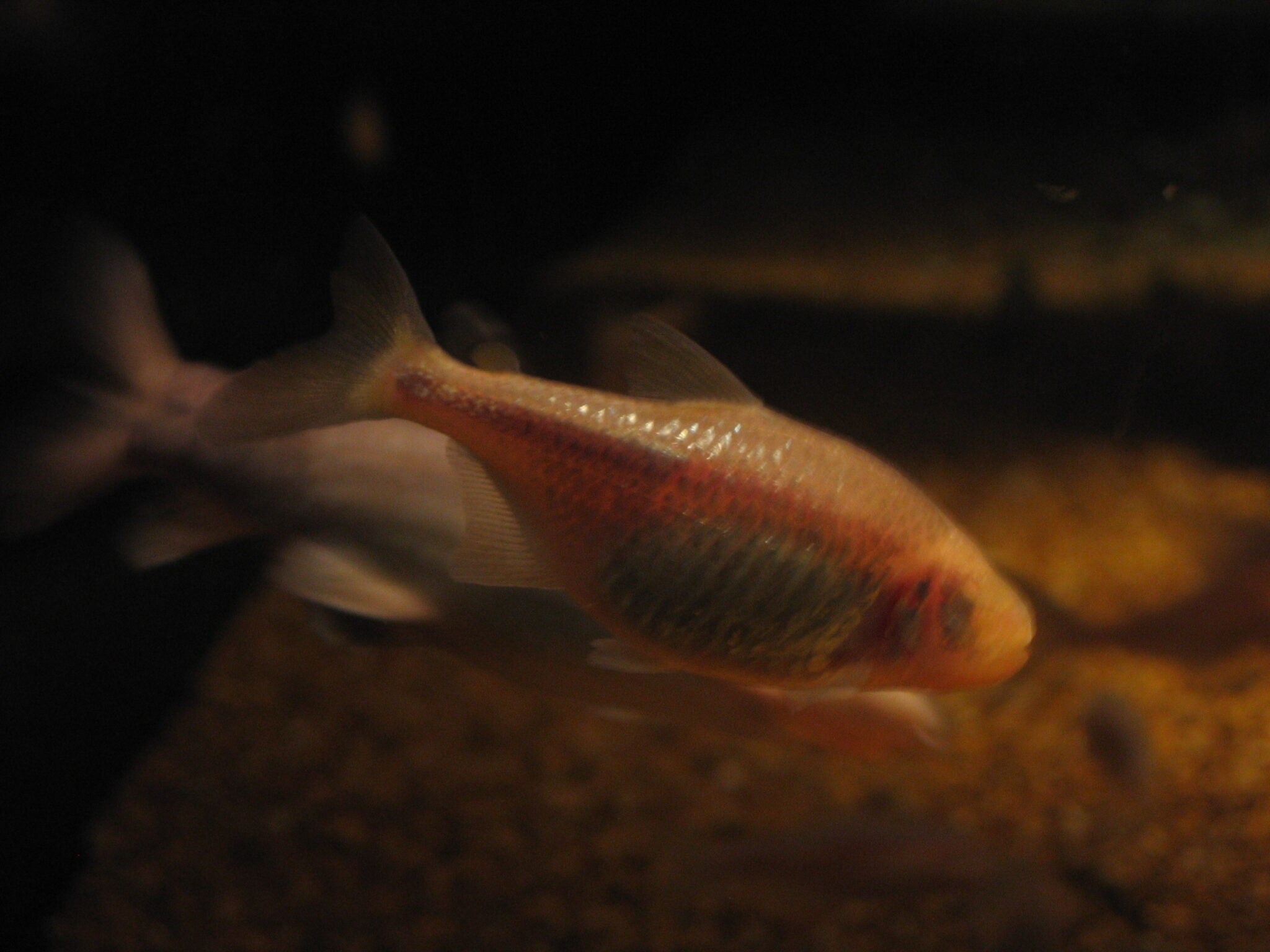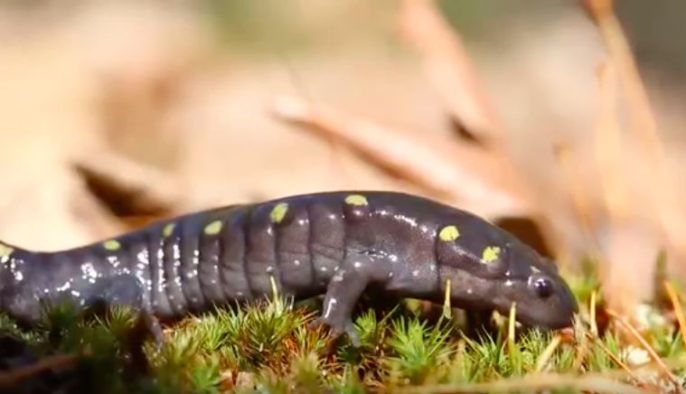Taste buds evolved on the head and chin of blind cavefish to help them locate food in their dark environment.
By Helen Petre
Since they live in completely dark caves for their entire lives, blind cavefish, Astyanax mexicanus, have no eyes. In order to find food, how do they compensate?
During the Pleistocene period, some eyed A. mexicanus began living in caves, and over a period of time, they lost their eyes and their body color. They’re blind, pale, and translucent, which makes sense, because there is no light, so no need to see or be seen.
This is how evolution works. If a fish that lives in surface streams inherits a mutation that results in no eyes, this would be bad. The fish would probably die, or at least not pass genes to the next generation. In a dark cave, if fish inherit a gene for no eyes, who cares? The fish will do fine, and the other fish will not even notice, so the gene gets passed to the next generation.

A. mexicanus individuals who do not live in caves, still live in surface streams, have enormous eyes, and are silver. A. mexicanus fish are all the same species, regardless of whether they live in caves or surface streams. They can mate and produce viable offspring, which is not likely to happen in the wild, as they can’t wander around and find each other, but works well for lab studies. A group of researchers at the University of Cincinnati did just that in order to answer the question: If they are the same species, how can they be so different?
Does the environment determine the number of taste buds?
The researchers recently published a study in Communications Biology on how taste has evolved differently between surface and cave dwelling A. mexicanus.
They found that where the fish live does determine the number of taste buds they have. Since the blind cavefish have no eyes, it seems reasonable that they have advanced touch and taste receptors that help them find food in the dark, and in fact, they do.
From birth to about five months of age, the surface and cave dwelling fish have the same number of taste buds. After that, the cave dwelling A. mexicanus develop more taste buds on their heads and chins. The researchers found that cavefish develop more and more taste buds as they grow older. Why?
Why does the number of taste buds increase at five months?
At around five months of age, cavefish change their diets. Instead of eating live foods, they begin to eat bat guano, or bat poop. Bat poop is used by humans for fertilizer and gunpowder because it contains nitrogen, phosphorus, and chitin.
This could be important, or not. Catfish, for example, are born with taste buds all over their bodies. They don’t usually eat guano, but they are bottom dwellers and don’t depend too much on vision for finding food. Catfish are scavengers and eat whatever they can find, dead or alive. They might eat guano if it was there.
What else eats guano? Apparently, lots of insects, cave crayfish, and cave salamanders. Caves don’t have a lot of food, but they do have guano if they have bats, so whatever lives in caves eats guano.
RELATED: Picky Eating and Brain Evolution in Butterflies
What’s the taste factor for guano?
Humans have taste buds that taste sweet, salty, sour, and bitter. The research team tested which tastes the fish’s external taste buds were receptive to and found that they taste bitter substances. The researchers’ molecular work uncovered the TAS2R gene, which is, in all organisms, important for tasting bitter. They found many copies of it, and differences in its gene expression.
Since guano is made of urea, chitin, and uric acid, it is probably bitter. Most poisons are bitter, but so is coffee, broccoli, and citrus peels. In most organisms, bitter taste is not pleasant, and in fact, is associated with poisons, such as arsenic, cyanide, and strychnine. So for most of us, bitterness is not good.
Humans sometimes acquire a taste for these bitter substances, but if blind cavefish can find guano more easily, they will probably survive better than blind cavefish who can’t.
RELATED: Multitasking Sensory Neurons in the Brain of a Marine Invertebrate
Why is it important to be able to find guano?
For a fish with no eyes that lives in a cave where there is pretty much no food except guano, it is probably really important to be able to find guano. For all organisms, eating is dangerous. We all need some way to tell if something we eat is going to kill us. For most of us, things that taste bitter are not good. Humans do not like bitter. We like fat and sugar. We like to eat substances that provide calories and nutrients, and don’t kill us. This is a really good thing, for the most part. Now that calories are easy to obtain from the supermarket, the desire for fat and sugar may not be so necessary anymore, but in our evolutionary past, it was necessary for survival. We had to eat things that kept us alive and not eat things that killed us.
As with all genetically derived characters, there is variation. Some humans like fat and sugar more than others. Some humans do not like broccoli more than others. These are genetic differences. For most of us, these differences are not that important, but they would be very important if there were lots of poisons and very little nutrients in the environment. People who could detect poisons would not die and people who could detect fats and sugars would gain energy and calories.
The researchers cannot determine if the cavefish actually “like” the taste of guano, but it is fair to say that fish that live in caves will be able to find it more easily if they have lots of taste buds on their heads. Thus, those fish with external taste buds may find food more easily, live longer, mate more, and pass their genes to more offspring than fish without external taste buds. This is evolution, and for cavefish, it is probably the key to their cave survival.
This study was published in the peer-reviewed journal Communications Biology.
Reference
Berning, D., Heerema, H., & Gross, J. B. (2024). The spatiotemporal and genetic architecture of extraoral taste buds in Astyanax cavefish. Communications Biology 7, 951. https://doi.org/10.1038/s42003-024-06635-2
Featured image “Blind Cavefish” by skpy is licensed under CC BY-SA 2.0.
About the Author
Helen Petre is a retired biologist who continues to learn and teach science.




